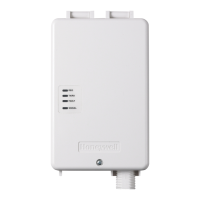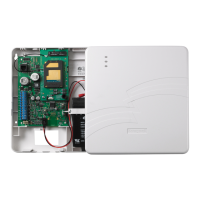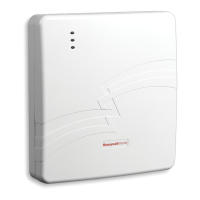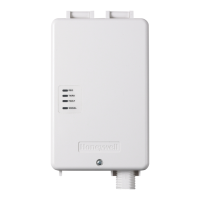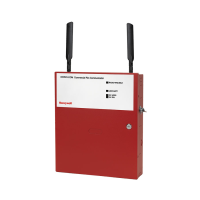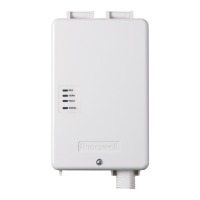UDACT Instruction Manual — P/N 50050:M 12/18/2009 51
Normal Mode Operating Instructions
The UDACT supervises both telephone lines for proper voltage. A delay of two minutes will occur
before a fault in either phone line connection is reported as a trouble. When a fault is detected, the 4
character display will show either “no 1” or “no 2” depending upon which telephone line has the
fault (“no 1” = Primary Line, “no 2” = Secondary Line) and the trouble condition will be reported
to the Central Station over the remaining phone line. A 30 second delay will occur after recovery
from a fault.
The UDACT features line seizure capability provided for both primary and secondary telephone
line interfaces. Any time the UDACT must call the Central Station, line seizure will disconnect
any local premises phones sharing the same telephone line.
All transmission to the Central Station will be made over the Primary phone line. In the event of
noisy phone lines, transmissions will be made via the Secondary phone line.
A maximum of 14 point trouble messages are transmitted per hour. This will prevent the Central
Station from being overloaded with trouble messages in the event an SLC is removed.
Two phone numbers must be programmed, the Primary phone number and the Secondary phone
number. All system reports will be transmitted to the primary number. Reports will automatically
be sent to the secondary number if attempts to transmit to the primary number are unsuccessful. If
10 total attempts to communicate are unsuccessful, the Communicator Failure output will be
activated (TB3 - comm fail). Note that as an option, all reports may also be sent to the secondary
phone number. Refer to “Programming Instructions” on page 28.
The UDACT meets NFPA 72 for Remote Station Protective Signaling Service and Central Station
Signaling Service reporting requirements for: (a)the type of signal, (b)condition and (c)location of
the reporting premises.
Since higher priority events take precedence over lower priority events, the UDACT will transmit
higher priority events before sending the lower priority events. Priorities are as follows:
Table 4.2 Event Activations and Restorals
Event Activations Event Restorals
1 General Alarm 20 General Alarm Restoral
2 Zone/Point Alarm #N 21 Zone/Point Alarm #N Restoral
3 General Security
*
22 General Security Restoral
*
4 General Supervisory 23 General Supervisory Restoral
5 Zone/Point Supervisory #N 24 Zone/Point Supervisory #N Restoral
6 General System Trouble 25 General System Trouble Restoral
7 AC Power Loss 26 AC Power Loss Restoral
8 Zone/Point Trouble #N 27 Zone/PointTrouble #N Restoral
9 Low Battery 28 Low Battery Restoral
10 Telco Primary Line Fault 29 Telco Primary Line Fault Restoral
11 Telco Secondary Line Fault 30 Telco Secondary Line Fault Restoral
12 NAC Fault Code 31 NAC Fault Code Restoral
13 Communication Trouble, Primary Number 32 Communication Trouble, Primary Number Restoral
14 Communication Trouble, Secondary Number 33 Communication Trouble, Secondary Number Restoral
15 EIA-485 Communication Bus Trouble 34 EIA-485 Communication Bus Trouble Restoral
16 System Off-Normal Code 35 System Off-Normal Code Restoral
17 System Automatic Test Report
18 System Abnormal Automatic Test Report
19 Manual Activated Test Report
* The General Security Code applies to UL 864 9th Edition-listed Control Panels only.
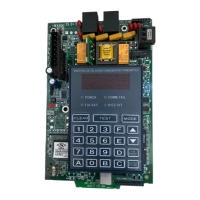
